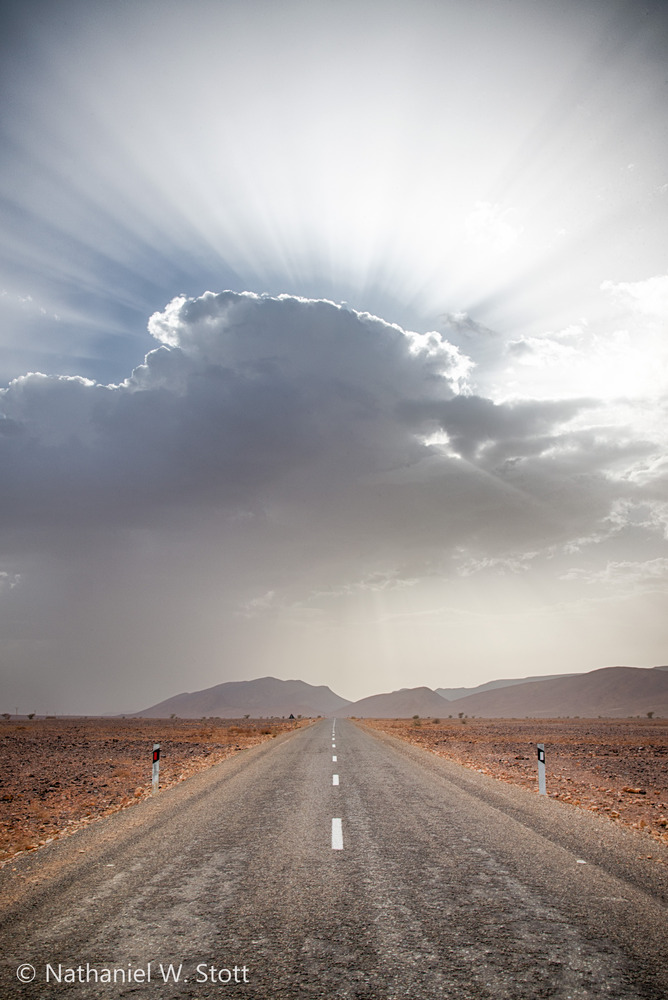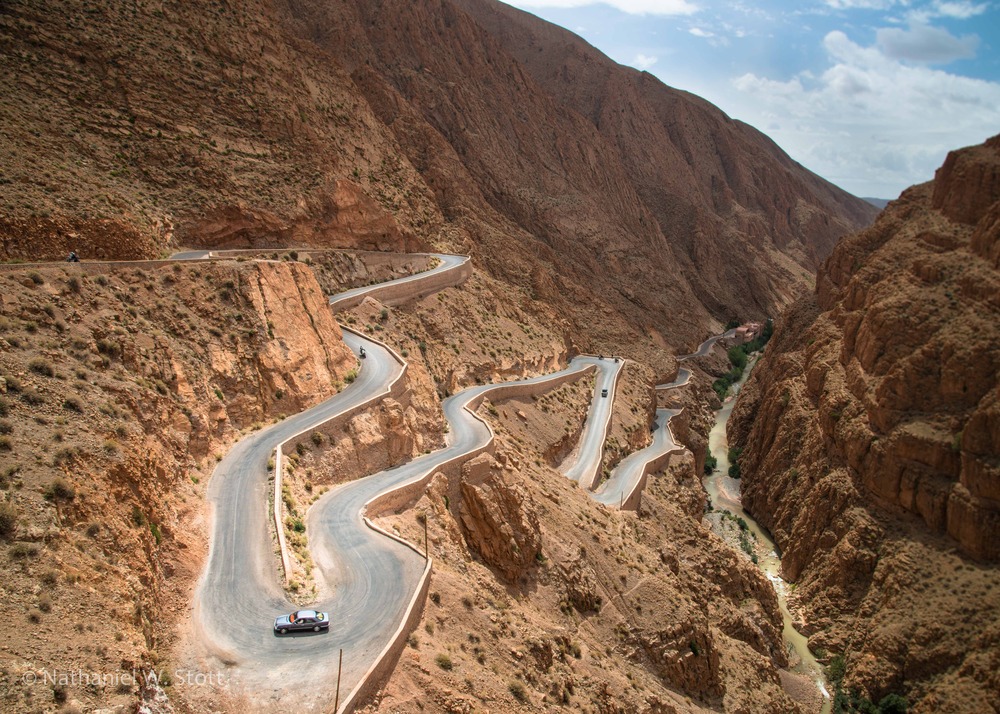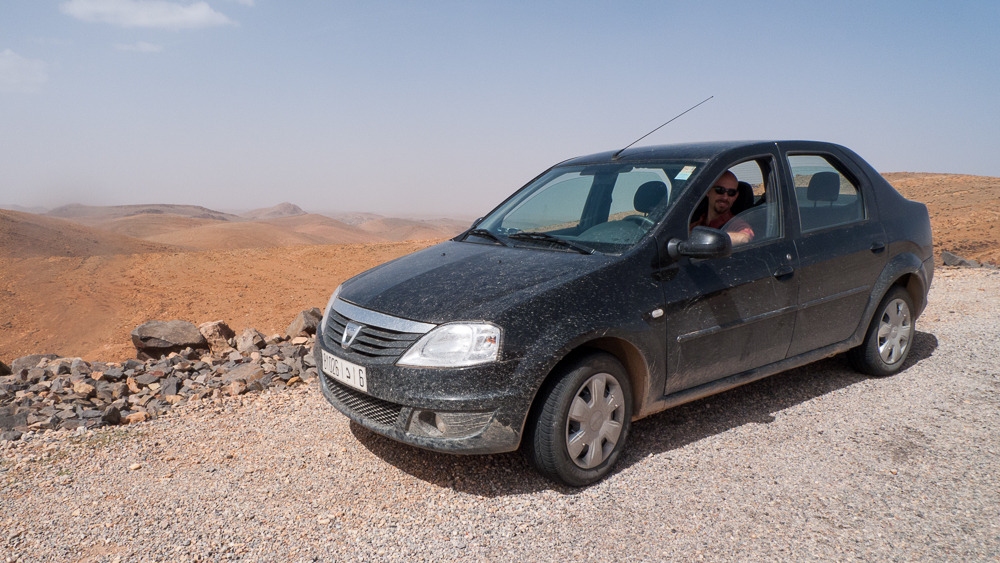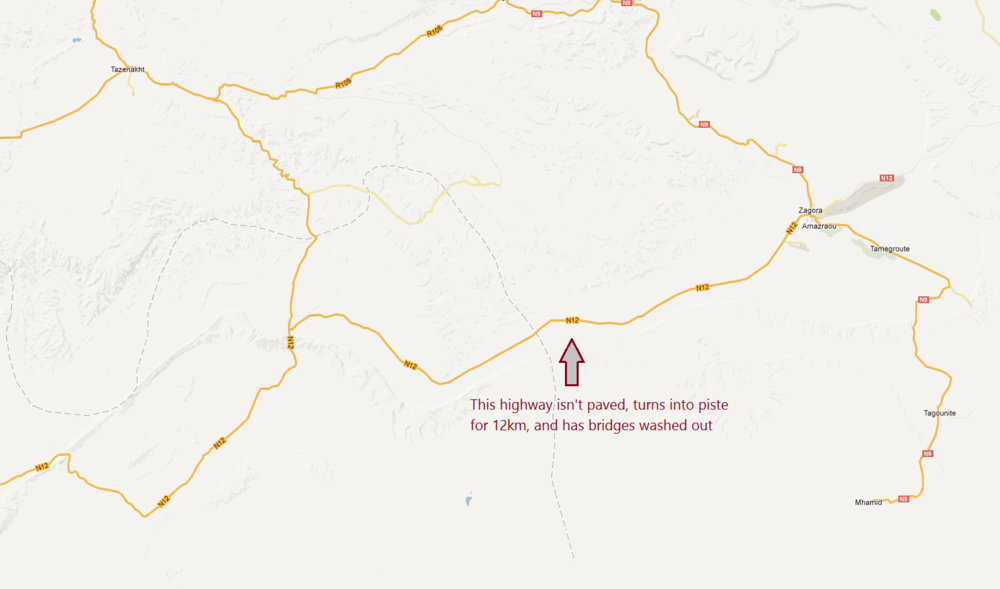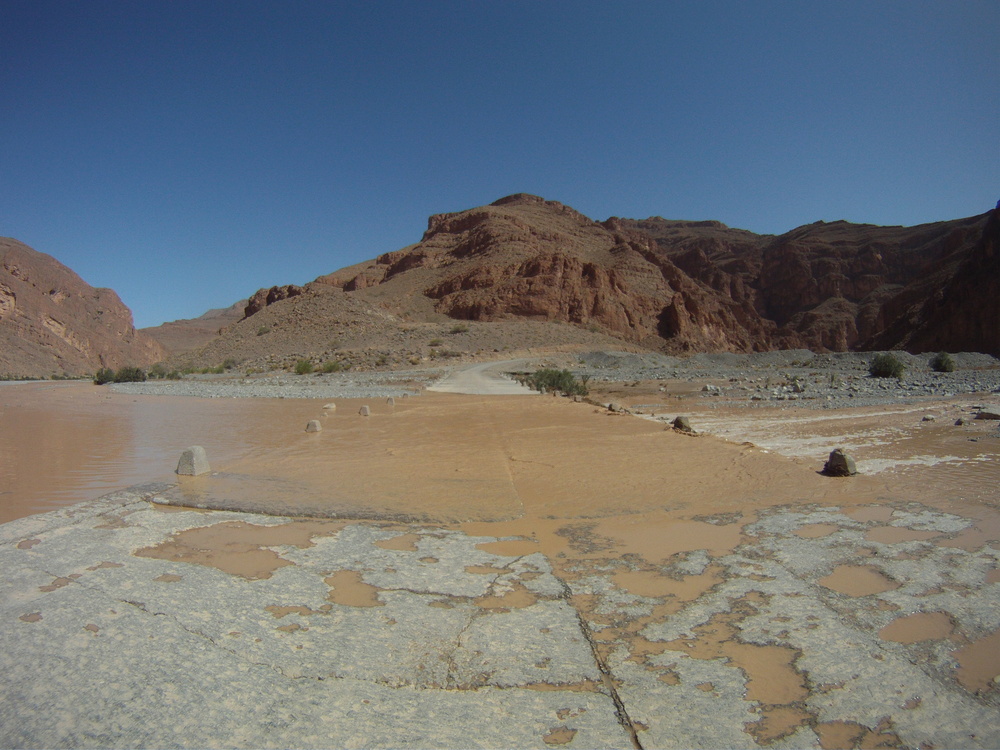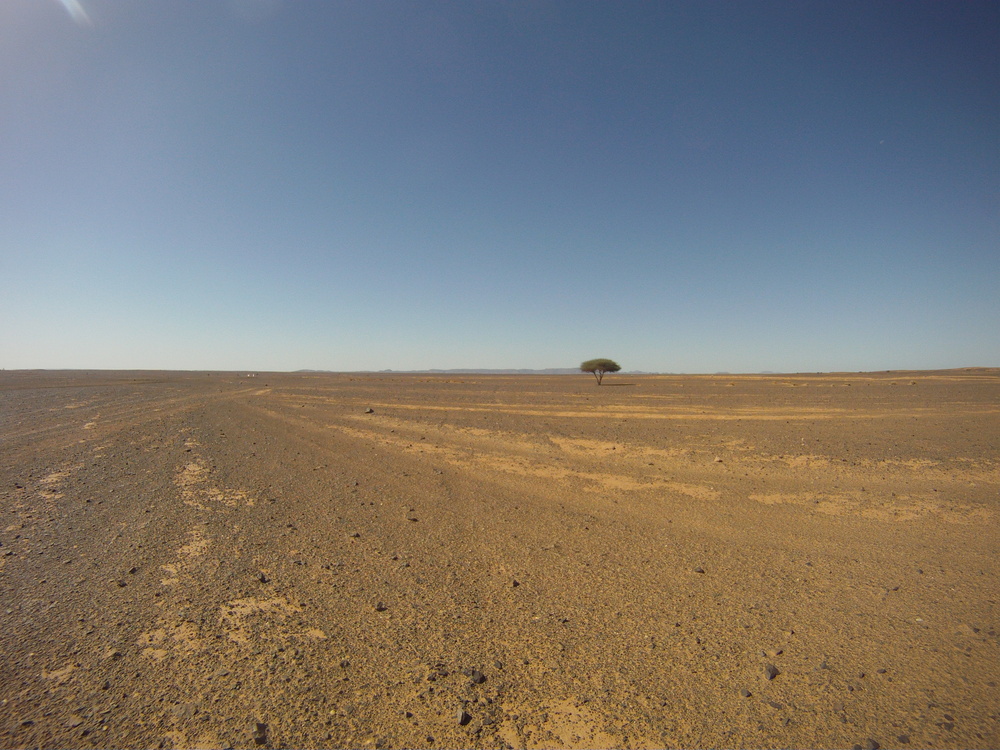09
2012Driving In Morocco
A
nne and I spent a bunch of time reading up on how to get around in Morocco. While renting a car is always an “easy” option, in countries like Morocco it can be trickier. Reading up just a little on forums about the perils of driving in Morocco with the winding roads and crazy drivers will very quickly put you into looking at other modes of transportation, which we did. However, when it came right down to it we were quite concerned that public transportation would take up significant logistical time and would compromise our ability to take the photos we wanted. In the end, we rented a car and we’re thrilled we did.
Bigger Than it Looks on Paper
The country is larger than you might think when looking at it in guide books and on maps. That coupled with the fact that you’ll often read about how tours will take you from Marrakech to Erg Chebbi and back in 3 days deludes you into thinking that you can move around quickly. This really isn’t the case at all if you’re drive around or over mountains. While we were able to make pretty good time on the Saharan side of the Atlas, anything near the mountains means winding roads that significantly slow your speeds and dramatically increase your transit times.
We also discovered that local culture is all about underestimating the amount of time (and distance in some cases) it takes to get anywhere. Figures almost always needed to be adjusted up by a factor of 1.5X to 2X. To account for this, it’s best just to break your travel up into smaller days than you think you need and spend the additional time simply enjoying what Morocco has to offer.
Renting a Car
Anne and I rented our car from Thrifty at the airport in Marrakech. That turned out to be the cheapest reasonable option for the time we wanted. Based on talking with the taxi driver who carried us to the airport, it sounds like these rates vary based on time of year. You may find that at different times of the year you can rent a car from one of the major rental agencies, pick it up at an office in downtown Marrakech, and have that option be cheaper than picking up and dropping off at the airport. Increasingly, renting cars in foreign countries does not require an international driver’s license and Morocco is no different. We opted for the Collision Damage Waiver given all we’d read in blogs about car accidents, and having seen a bad one on the way to the airport only made that decision easier.
The car we rented was a Dacia Logan, manual transmission with A/C. This is the staple of the rental fleet. When you see one in Morocco 9 times out of 10 it is a rental driven by a foreigner. The car isn’t elegant, but it held our two large bags easily in the trunk with room enough to cram in our photo backpacks when needed. While the Logan has almost no guts in the engine, it has the advantage of having a good deal of ground clearance, which came in handy in the desert and on one of the “highways” we travelled. Note that many other sedan rentals have significantly less clearance and would have gotten us into trouble on our trip…
Obviously, when you pick up the car make double sure that you’ve marked ALL the marks on the car on the rental agreement. I was insistent on having some paint splotches marked and didn’t get my way. That almost came back to haunt me when I turned the car in. If the agent doesn’t want to mark it, tell them you’re not leaving until they do.
Driving
Honestly, driving in Morocco isn’t bad. Moroccans drive on the right side of the road as a rule, but that’s no guarantee that they will stay there… Indeed, on most mountain roads cars stay in the center of the road or even drive in the oncoming lane to minimize the curves in the road. You should expect a car in your lane at the top of any hill and around any corner. Check your speed and surroundings accordingly. In the Anti-Atlas, the mountain roads are really only about 1.5 cars wide. This means that one or both parties need to give significantly to allow oncoming passing. Here I found the Logan to be a dead giveaway to my tourist status. This translated to other cars typically “expecting” me to give way. As a rule, I followed “Tonnage Law” and always let busses and other large vehicles win. Your mileage may vary depending on how well you can play chicken with oncoming traffic.
When driving in cities the key to safe driving is predictability. Watch for people crossing but be slow, predictable, and persistent in how you pass or navigate through traffic. Even the major highways in Morocco pass through small towns where speeds drop. Here you should expect people, children, livestock, and virtually anything else you can think of on the road. Moroccans aren’t stupid and they do generally get out of the way, but people always come first and even large trucks will brake for pedestrians and donkey carts.
Navigation
While you’re enjoying your tour around Morocco, be sure to get a copy of the latest Michelin map. We also used a GPS loaded up with offline maps. We simply cached the map for our route on our phone mapping app on a daily basis. Do note that relying on these online mapping services (Google, Bing) got us into trouble in one instance between Zagora and Tata. Rely on reputable paper maps and ask locals about the conditions before you go.
Major towns can be a nightmare to navigate because of the mass of confusion on the roads. Don’t expect to be able to navigate by looking at a map, identifying roads, and then following signs. You’ll want a navigator with a good sense of direction and some great dead reckoning skills.
In any event, don’t strictly rely on road signs to help you navigate. Most major highways have good markings, but those too may disappear. For example, following the N9 through Ouarzazate we needed to make our way towards Dades Gorge on the N10. At one point the road came to a major fork with no signs whatsoever. Our phone’s GPS easily confirmed that we were on the correct road without incurring us significant detours.
Signs and Signals
When driving in Morocco, there are a couple handy things to know that we had to figure out. First, honking the horn is not a rude gesture as it is in North America. At stop lights, it is customary for the first car in the line to be too close to the light to actually see it change. Often, cars further back will honk to let this driver know the light has turned to green. Honking is also a way of alerting others to your presence as when passing.
When driving on Moroccan highways, you may notice other cars flashing their lights at you. In almost all cases this marked a police checkpoint or speed trap of some sort. Typically these checkpoints don’t stop tourists and pass them through. However, do return the courtesy to drivers coming in the other direction.
Road Rules
Speed limits should be taken seriously in Morocco, even though you will see just about every local breaking the speed limits liberally. In general, police do discriminate against tourist more when it comes to speeding and if you’re caught you should expect a ticket. While it may be tempting to follow that Land Cruiser that’s doing 140 kph (even in towns or places where the limit is 60kph) on its way to Merzouga, do so at your peril.
Seatbelts are required by Moroccan law for any driver or passenger in a private vehicle (but not in Grand Taxis). Not wearing a seatbelt can get you in trouble and will cause you to be stopped at any police checkpoint. Ensure when you pick up your rental car that all seatbelts are functioning correctly (the fine is far greater if there is an equipment problem) and also ensure that all passengers are wearing belts.
If you do get stopped, the police will fine you on the spot. Fines can be large but it may be possible to come to an “agreement” on the fine if you want to try your hand at bargaining.
Washes
When driving in the desert and in the canyons, you’ll drive across many river washes. More likely than not these are dry. However, we received some relatively heavy rain around the Todra and Dades Gorges which caused some of these washes to fill.
Each wash is generally carefully made and you should be able to tell at a glance if it is crossable or not. On either side of the road are concrete markers to indicate both the road edge and the depth of the water. The markers are only about 18 inches tall and if you can clearly see them then you should easily be able to cross the wash in all but the lowest clearance rental cars. If the water is running up to the colored portion of the markers, then you should probably walk the wash crossing to verify that you can make it.
We crossed at least a dozen such flooded washes up the Todra Gorge. Despite some of them looking somewhat challenging, our Dacia Logan crossed them all with ease.
Driving in the Desert
Rental car agreements are quite explicit in their legalese about not driving across stony desert. However, around Merzouga you may need to venture off the paved road to reach your accommodation. Non-paved “roads” around this area are generally well marked and clear, however they may have significant washboard which will lower your speed to a crawl.
Other than the bumps, we found these roads to be perfectly “safe” for travel in the Logan despite our initial fears. Drive at speeds that are reasonable for the conditions and watch for rocky areas where you should slow down to ensure you don’t puncture a tire.
Other Skullduggery
There were at least two specific types of attempts to get us to stop in our travels. The first involved a car on the side of the road with its hood up. One of the people jumped out in front of us and tried to flag us down and stop us, which he didn’t do for the car immediately in front of us (a local). We didn’t stop, but this is apparently a common scam to try and lure you to a carpet shop and put a hard sell on you. The old adage applies, don’t pick up strangers, no matter what you might think. In virtually all areas we travelled there was enough traffic to ensure a Moroccan could make it to safety without needing our assistance.
The other attempt was to get us to buy goods at a roadside vendor. In this case the man literally jumped in front of the car and tried to stop us. I maintained speed and he quickly realized he should move out of the way. I’d recommend the same to anyone else in a similar situation. This man had no intention of getting run down but the tactic likely works more often than not because people are afraid.
Returning Your Rental Car
One quick note here about returning your rental car. We returned our car immediately after coming from Essaouira where the car got incredibly dirty from the salt spray. The car rental agency wanted to charge me for washing the car. I was able to avoid paying for this “service” since the car had more gas in it than when I started. But anyone renting should keep a close eye on the rental contract and ensure they don’t pay for silliness like this unless it’s explicitly called out in the rental agreement.
Summary
We had a blast driving around Morocco in our Dacia Logan. There were some long driving days, but at no point did I ever really feel like driving in Morocco was dangerous. Having our own car allowed us to explore places few tour busses ever go and to slow down and change our itinerary as needed. Most importantly we were able to stop as we desired to take pictures and explore places most other tourists don’t.
